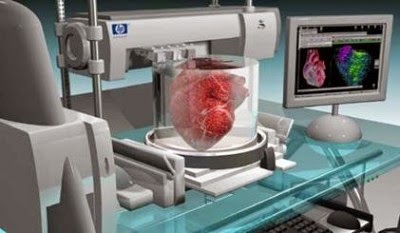3D-printing is one of the greatest technologies to come out in the past few years. It has been used by various industries in different fields and has allowed us to unveil new horizons. There is no doubt that this technology is revolutionizing the world, but now it’s even saving lives.
14-month old, Roland Lian Cung Bawi, from Owensboro, Kentucky was diagnosed with four congenital heart defects. He was admitted into the Kosair Children’s Hospital in Louisville, Kentucky where doctors knew immediately that the boy would need surgery. The only obstacle in the way was that doctor’s could not tell precisely what was wrong until they were in the middle of the surgery.
Surgeon Erie Austin realized that creating a 3D model of the boy’s heart would help study the defects and save the boy’s life. Dr. Austin called the Speed School of Engineering at the University of Louisville and told her of the problem and suggested a solution. The engineering department provided her a MakerBot 3D printer which would allow them to make a 3D model of the boy’s heart using 2D CT scans just as Dr. Austin had imagined. Tim Gornet, manager of the University’s Rapid Prototyping Center, was the one who the surgeon reached out to and his positive response helped save the boy’s life.
The Rapid Prototyping Center created a model made from a polymer known as ‘Ninja Flex’ which was 1.5 times larger than the boy’s heart (for easier inspection). Three general pieces of flexible filaments were made in the $2500 printer in 20 hours. The replica cost $600 to create, according to Gornet. The model helped doctors study the defects and come up with solutions before the critical surgery and on February 10th, 2014, Roland’s heart was repaired by Dr. Austin in what is the first use of 3-D printing for treating a pediatric heart patient.
The boy was released from the hospital on February 14th and and returned on February 21st for monitoring checks which showed good results. Thanks to Dr. Austin’s forward thinking and the savvy engineering team from the University of Louisville, a young life was saved and a new step was taken in medical technology that can save countless lives in the near future.





